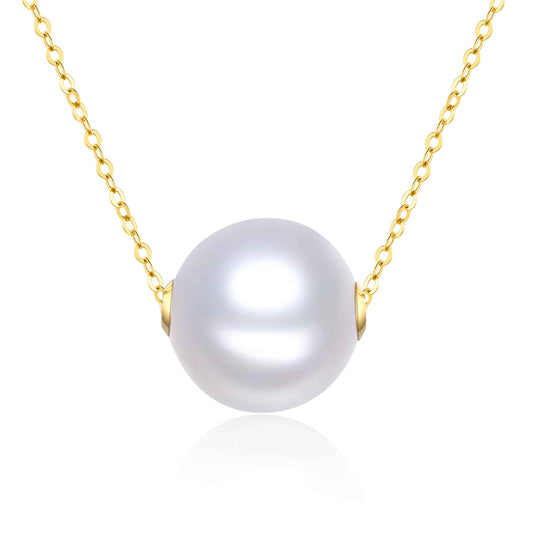
Marie Curie: A True Pioneer
Share
She forged a way for women in science and academia.
Like a true pearl with many layers, Marie Curie is a true pioneer and idol for any woman who wants to make their mark in the sciences. This is another installment of the Living like a Pearl series. Find the other stories here.
________
Marie Curie, the Polish-French physicist and chemist, was the first woman to win a Nobel Prize – not once, but twice! And in two different scientific fields. Today, she’s still the only person to ever win a Nobel prize in two different fields. She was also the first female professor at the University of Paris, and she conducted pioneering research in radioactivity.
Curie had a lot of challenges and barriers to cross. It all started in Warsaw, Poland, where she was born in 1867 as Maria Salomea Sklodowska. At the time, Poland was under the rule of Russia. Both her mother and father’s families lost everything during the Polish uprising in their fight for independence.
As a girl, Curie wasn’t allowed to attend universities. Her father was a math and physics teacher, and when the Russian authorities decided to eliminate laboratories from schools, he brought the equipment home and taught his children to use it. Her mother died from tuberculosis when she was only ten years old.
Marie and her sister, Bronislawa, attended the Flying University, an underground Polish institution teaching traditional Polish curriculum and ideology. The Flying University admitted women.
Later, Marie and her sister made a deal: Marie would help finance Bronislawa’s medical studies in France for two years, then Bronislawa would fund hers. To pay for that, Marie became a governess. It was during this time she met her first love, but because she was penniless, his parents wouldn’t allow them to marry.
In 1891, she finally left for Paris and received her first degree in Physics in 1893.
Her future husband, Pierre Curie, was introduced to her by a mutual acquaintance and they started working together. When he proposed, she declined because she still planned to go back to Poland, but he countered with an offer to go with her. However, because Marie was a woman, she couldn’t get work at a Polish university. Pierre convinced her to go back to Paris to pursue a Ph.D.
For her thesis, she studied uranium rays. In 1900, she was appointed as the first woman faculty member for Ecole Normale Superieure, and in 1903 she received her doctorate from the University of Paris and also her first Nobel Prize in Physics.
In 1906, Pierre was killed in a road accident by a horse-drawn vehicle. At the time, Pierre was professor and chair of Physics at the University of Paris. After his death, the chair was offered to Marie.
In 1911, it came out that Marie had an affair with another physicist, who was married but estranged from his wife. The tabloids vilified her as the “foreign Jewish home-wrecker” (even though she wasn’t even Jewish). One day, when coming home from a conference in Belgium, she found an angry mob in front of her house and she had to seek refuge with her two daughters at a friend’s house.
Despite the challenges, she carried on with her work and in 1911 she won her second Nobel Prize, this time in Chemistry.
During WW1, Marie developed mobile radiography units to enable battlefield surgeons to treat wounded soldiers as soon as possible. Marie became the director of the Red Cross Radiology Service and was assisted by a military doctor and her 17-year-old daughter, Irene. They also trained other women as aides. They had 200 radiology units at field hospitals and 20 mobile units. It was estimated that over a million wounded soldiers were treated with her X-ray units. Marie and Irene became known as Petites Curies.
Marie also bought war bonds with her Nobel Prize money:
“I am going to give up the little gold I possess. I shall add to this the scientific medals, which are quite useless to me...I should like to bring it back [from Stockholm] and invest it in war bonds. The state needs it. Only, I have no illusions: this money will probably be lost.”
In 1922, Marie secured a fellowship at the French Academy of Medicine. Under her leadership, the institute produced four more Nobel Prize winners, including her daughter Irene.
She died in 1934 from aplastic anemia, which she was believed to have contracted due to years of exposure to radiation. Not knowing the dangers of radiation, she often remarked at the green glow it gave off in the dark.
Years after her death, in 1995, the remains of both Marie and Pierre were transferred to Paris Pantheon. She was the first woman to be honored this way. Their remains were sealed in lead lining. Her papers from the 1890s are considered too dangerous to handle, and even her cookbook is highly radioactive. The papers are kept in lead-lined boxes and anyone who wants to research them must wear protective clothing.
Marie Curie was the ultimate pearl with many layers formed through hard work and dedication. She forged a way where no woman has ever gone before. She developed mobile X-ray units that saved many lives and changed the medical profession forever. She discovered two elements, Radium and Polonium, and she built a legacy by founding the Curie Institutes in Paris and Warsaw.



